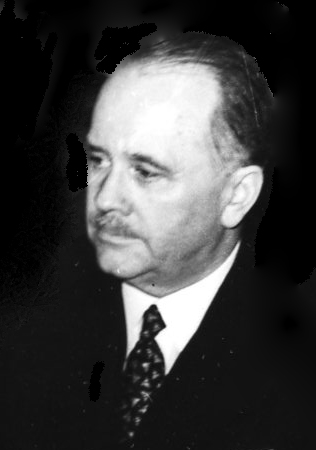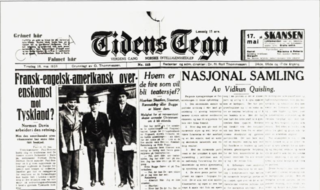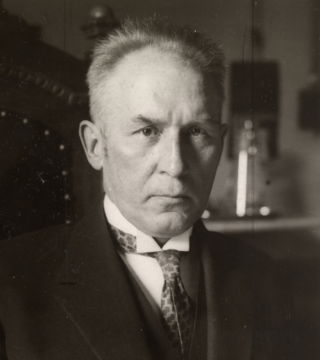| Part of a series on |
| Norwegians |
|---|
 |
| Culture |
| Diaspora |
| Other |
| Norwegian Portal |
Mass media in Norway outlines the current state of the press, television, radio, film and cinema, and social media in Norway.
| Part of a series on |
| Norwegians |
|---|
 |
| Culture |
| Diaspora |
| Other |
| Norwegian Portal |
Mass media in Norway outlines the current state of the press, television, radio, film and cinema, and social media in Norway.
Reporters Without Borders ranks Norway 1st in its Worldwide Press Freedom Index. Freedom of the press in Norway dates back to the constitution of 1814. Most of the Norwegian press is privately owned and self-regulated; however, the state provides press support.
The two companies dominating the Norwegian terrestrial broadcast television are the government-owned NRK (with four main services, NRK1, NRK2, NRK3 and NRK Super) and TV2 (with TV 2 Filmkanalen, TV 2 Nyhetskanalen, TV 2 Sport, TV 2 Zebra and TV 2 Livsstil). Other, long-running channels are TVNorge and TV3.
National radio is dominated by the public-service company NRK, which is funded from the television licence fee payable by the owners of television sets. NRK provides programming on three radio channels – NRK P1, NRK P2, and NRK P3 – broadcast on FM and via DAB. A number of further specialist channels are broadcast exclusively on DAB, DVB-T, and the internet including Radio Norway Direct Norway's new English language Radio Station.
Additionally, there are a number of commercial radio stations as well as local radio stations run by various non-profit organizations.
As of June 2023, it is estimated that 3.4M Norwegians use Facebook. [1] For comparison, the total number of inhabitants is about 5,504,329 people
Institutions within organized labour are the Norwegian Union of Journalists, the Association of Norwegian Editors and the Norwegian Media Businesses' Association—these are organized in the umbrella Norwegian Press Association. The Press Association is responsible for Pressens Faglige Utvalg, which oversees the Ethical Code of Practice for the Norwegian Press. The Broadcasting Council oversees the state-owned Norwegian Broadcasting Corporation. The Norwegian Media Authority contributes to the enforcement government regulations.
As with other related countries, the Norwegian media is often criticized of being biased towards the political left. Political scientist Frank Aarebrot claims to present evidence of this in terms of both Norwegian journalists and editors. [2] Aarebrot has said that "it is serious when Norwegian journalists massively support the political left, but it is a bit more serious when it actually to a greater degree applies to Norwegian editors than among the journalists". He also expressed concern that journalists who sympathise with the Progress Party may have a lesser chance to get hired than journalists with political sympathies close to editors. [3]
For instance, in the actual 2009 election, the Progress Party received 41 mandates, while by journalists it would have received none. The Christian Democratic Party and Center Party would also have been left without representation, while the revolutionary socialist party Red would enter parliament with 9 mandates. The Socialist Left and Liberal Party would also receive significant gains. [2] In 2003, as much as 36% of Norwegian journalists said they would vote for the Socialist Left Party alone, with only 25% saying that they would vote for any of the right-of-center Liberal, Christian Democratic, Conservative or Progress Party combined. [3] News commentator Frank Rossavik once said that if a journalist would stand forward as a Progress Party voter, it would have been "social suicide", and more devastating than withdrawing from the Norwegian Union of Journalists. [4]
Norwegian editors have as well been proven to have leftist political views, with a 2008 survey showing that the Labour Party would have been given a majority in parliament alone with 85 representatives. [3]
The notion of political bias based on the sum of individuals' party selection has been criticized. Among others, conservative historian and politician Francis Sejersted holds that the general media is neither left-slanted nor right-slanted, but "media-slanted". This means that media across the political spectrum have a tendency to choose the same angle on a case, focusing on personification and dramatic events. [5]
The media systems in Scandinavian countries are twin-duopolistic with powerful public service broadcasting and periodic strong government intervention. Hallin and Mancini introduced the Norwegian media system as Democratic Corporatist. [6] Newspapers started early and developed very well without state regulation until the 1960s. The rise of the advertising industry helped the most powerful newspapers grow increasingly, while the little publications were struggling at the bottom of the market. Because of the lack of diversity in the newspaper industry, the Norwegian Government took action, affecting the true freedom of speech. In 1969, Norwegian government started to provide press subsidies to small local newspapers. [7] But this method was not able to solve the problem completely. In 1997, compelled by the concern of the media ownership concentration, Norwegian legislators passed the Media Ownership Act entrusting the Norwegian Media Authority the power to interfere the media cases when the press freedom and media plurality was threatened. The Act was amended in 2005 and 2006 and revised in 2013.
The basic foundation of Norwegian regulation of the media sector is to ensure freedom of speech, structural pluralism, national language and culture and the protection of children from harmful media content. [8] [9] Relative regulatory incentives includes the Media Ownership Law, the Broadcasting Act, and the Editorial Independence Act. NOU 1988:36 stated that a fundamental premise of all Norwegian media regulation is that news media serves as an oppositional force to power. The condition for news media to achieve this role is the peaceful environment of diversity of editorial ownership and free speech. White Paper No.57 claimed that real content diversity can only be attained by a pluralistically owned and independent editorial media whose production is founded on the principles of journalistic professionalism. To ensure this diversity, Norwegian government regulates the framework conditions of the media and primarily focuses the regulation on pluralistic ownership.
Carl Joachim Hambro was a Norwegian journalist, author and leading politician representing the Conservative Party. A ten-term member of the Parliament of Norway, Hambro served as President of the Parliament for 20 of his 38 years in the legislature. He was actively engaged in international affairs, including work with the League of Nations (1939–1940), delegate to the UN General Assembly (1945–1956) and member of the Norwegian Nobel Committee (1940–1963).

Turid Birkeland was a Norwegian cultural executive and former politician for the Labour Party. She was Minister of Culture in 1996–97. She was an author and also worked in television, including being chief of cultural programming at NRK and a member of the board at Telenor. She also headed the Risør Chamber Music Festival, and was the director of Concerts Norway.

Erling Sandberg was a Norwegian banker and politician.

Toralv Øksnevad was a Norwegian politician, journalist, newspaper editor and radio personality. He was known as the "voice from London" during World War II, when listening to foreign radio in Norway was illegal, and from October 1942 implied risk of death penalty.

Hans Fredrik Dahl is a Norwegian historian, journalist and media scholar, best known in the English-speaking world for his biography of Vidkun Quisling, a Nazi collaborationist and Minister President for Norway during the Second World War. His research is focused on media history, the totalitarian ideologies of the 20th century, and the Second World War. He served as culture editor of Dagbladet 1978–1985 and has been a board member of the paper since 1996. He was a professor at the University of Oslo 1988–2009, and is now a professor emeritus.
Per Øisang was a Norwegian journalist. He was best known as a radio and television presenter and correspondent in the Norwegian Broadcasting Corporation.
Henrik Grue Bastiansen is a Norwegian historian who specializes in media studies.

Torolf Elster was a Norwegian newspaper and radio journalist, magazine editor, novelist, crime fiction writer and writer of short stories. He was Director-General of the Norwegian Broadcasting Corporation (NRK) from 1972 to 1981.

Axel Otto Normann was a Norwegian journalist, newspaper editor, theatre critic and theatre director.
Sverre Mitsem (1907–2004) was a Norwegian journalist, newspaper editor and article writer. He is known as editor-in-chief of Tønsbergs Blad from 1954 to 1977 and for the column "SORRY" in Aftenposten, which he wrote from 1946 to 1996.

Tidens Tegn is a former Norwegian newspaper, issued in Oslo from 1910 to 1941.

Helge Krog was a Norwegian journalist, essayist, theatre and literary critic, translator and playwright.
Aake Anker Ording was a Norwegian civil servant and politician for Mot Dag and the Labour Party.

Wilhelm Frimann Koren Christie was a Norwegian jurist and Nazi collaborator. He is best known as director of the Norwegian Broadcasting Corporation for some time during the occupation of Norway by Nazi Germany.
Eyvind Mehle was a Norwegian radio personality, media professor and Nazi collaborator.

Victor Andreas Emanuel Mogens was a Norwegian journalist, editor and politician for the Fatherland League.
Roald Rachlew Dysthe was a Norwegian businessperson and acquitted Nazi collaborator.
Kåre Trygve Rein was a Norwegian trade unionist.

Haakon Ragnvald Olsen Sund was a Norwegian judge and prosecutor.
The milk strike was a strike in Nazi-occupied Oslo on 8 and 9 September 1941. It led to strong reprisals from the German occupiers, in the form of martial law, court-martial, mass arrests, two executions and several long-term jail sentences.
{{cite journal}}: Cite journal requires |journal= (help){{cite journal}}: Cite journal requires |journal= (help)